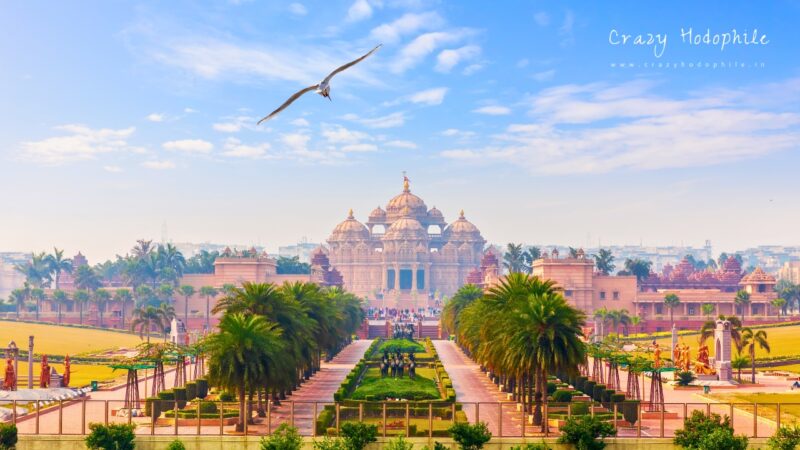Golden Temple, Amritsar, India | Tourist Attraction (2024)
Amritsar is the world’s famous for its Golden Temple also known as Sri Harmandir Sahib which is one of the most popular spiritual sites in the world. Around one hundred thousand Sikhs daily visit Amritsar to pay worship at Sri Harmandir Sahib in their Ardas. The main reason behind the temple known as the Golden Temple is that its top half of its is covered in almost 400 kg of pure gold leaf. The temple is a 2 storeyed structure and the rest of the temple complex is built in white marble, inlaid with precious and semi-precious colorful stones.
Table of Contents
History
- The Golden Temple was founded in 1574 by the fourth Sikh Guru, Guru Ram Das.
- The Gurudwara was completed in 1604.
Guru Arjan Sahib, the Fifth Nanak guru, conceived the idea of creating a central place of worship for the Sikhs all over the world and he himself designed the architecture of Sri Harmandir Sahib.
In 1830 Maharaja Ranjit Singh was the one who covered it in gold. It took 162 kg of gold, which nearly cost about Rs. 65 lakh.
The architecture and layout are symbolic of the open-hearted and accessibility to every individual irrespective of their religion, caste or gender. Over the next few decades, the temple was attacked a few times and undergone huge damage, which was fixed eventually. The temple complex was further constructed by the sixth Guru Sahib, under whose supervision the Akal Takht was constructed. Maharaja Ranjit Singh was the person who took over the initiative of bedecking the Gurudwara. With his generous contribution and support, the gold plating was completed in the year 1830.
Rituals and Practices
The Golden Temple acts as a self-governing body retaining a management committee, priests, supervisors, volunteers, etc. There is strict observance of a series of rituals followed on a daily basis. The temple is open to visitors round the clock except for four hours at night, which is the time used for cleaning the shrine.
Every day around 10:30 pm, the scripture is carried out in a golden palanquin from the gurudwara to the Akal Takht (which is the resting place). Before the break of dawn, the holy book is carried back by the Sikh Gurus and pilgrims and reinstalled inside the Harmandir Sahib.
Some Interesting Facts
- Largest Langar Seva
- Stairs that enter the temple go downwards. ( Implies a humble way of living)
- Located on a level below the ground level
Facilities Inside the Golden Temple
- Information office
- Free Shoe Stores
- Free Bus Facility for airport, Railway Station/Bus Stand.
- Free Langar Seva for 24*7
- 4 Water service booths at all the corners of the parikrama
- Bathrooms and toilet facility
- Railway booking, ATM, and postal facilities
- Free dispensaries
Best Time To Visit
Depending on your level of religious fervor, any time is a good time of day to visit. If you are the kind who wishes to avoid getting into endless queues, then early morning at 4 AM or late at night are great times to go to the temple.
Moreover, the lightning near the Temple is worth seeing at night.
Things to Keep in Mind
- Men / Women need to wear a scarf overhead.
- Visitors must remove their shoes and wash their feet by walking through the pool.
- Mobile Phones should be kept silent or off while entering religious areas.
- Photography and sunglasses are prohibited however photography is only allowed at the parikrama area.
Things to Discover inside Golden Temple
- Hukamnama
- Guru Ka Langar
- Akal Takhat
- Sikh Reference Library
- Central Sikh Museum
- Ramgarhia Bunga
- Historical Seat
- Dukh Bhanjani Beri
- Ath Sath Tirath
- Manji Sahib Diwan Hall
- Gurdwara Lachi Ber
- Darshni Deori
- Har Ki Pauri
- Gurdwara Thara Sahib
- 1984 Memorial
- Nishan Sahib
- Ber Baba Budha Ji
- Gurdwara Baba Atal Rai
- Gurdwara Bibi Kaulan Ji
- Guru Granth Sahib Research Centre
Location Map for Golden Temple
What’s Worth Seeing Near Golden Temple
- Jallianwala Bagh
- Wagah Border
- Akal Takht
- Maharaja Ranjit Singh Museum
- Bathinda Fort
- Jama Masjid Khairuddin
- Faridkot Fort
- ISKCON Temple
- Partition Museum



